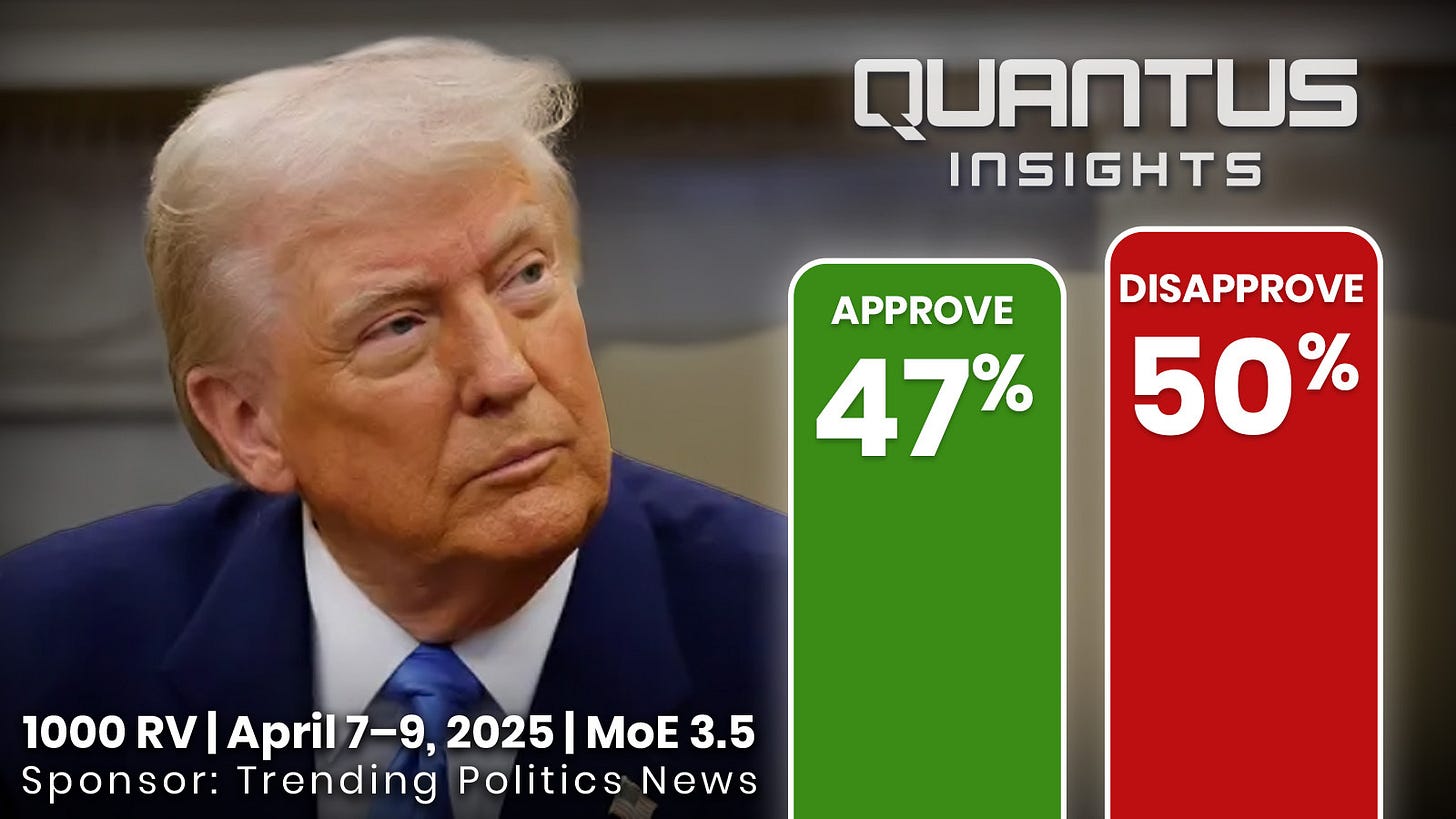New Poll Shows President Trump Below Water in Approval
Trump holds the right, loses the left, and faces a wary middle on economy and governance.
In the early months of President Donald J. Trump’s return to the White House, the electorate remains as divided as ever—along party lines, racial lines, and the great chasm between the governing class and the governed. A new national poll from Quantus Insights, conducted April 7–9 among 1,000 registered voters, offers a clear snapshot of the political temperature.
This marks our first national survey since President Trump’s return to office showing him underwater in job approval.
The numbers show a president who retains the unwavering loyalty of his Republican base, remains toxic to Democrats, and struggles to win over a skeptical middle. His overall job approval sits at 46.8 percent, with 49.7 percent disapproving—a net rating of minus 2.9 points. Yet buried in those top lines is a story of entrenched partisanship. Among Republicans, Trump commands 92 percent approval. Among Democrats, an equal 92 percent reject his leadership outright. Independents, the dwindling middle, tilt against him: 39 percent approve, while 53 percent disapprove.
Demographic divides mirror the political ones. Men approve of the president’s performance at 51 percent; women, at just 43 percent. Whites approve at a 52 percent clip, while only 20 percent of Black voters do. College-educated Americans disapprove by a wide margin; non-college voters—Trump’s bedrock—show majority support.
On the economy, Trump fares only slightly worse: 44.8 percent approve of his handling, while 51.1 percent disapprove. Even here, partisan lines are deep trenches. Republicans give him nearly unanimous support at 89 percent. Democrats are nearly as united in opposition at 92 percent. The racial gap is sharp—White voters split evenly, but only 22 percent of Black voters offer approval. Among Hispanics, the numbers are closer but still unfavorable: 40 percent approve, 53 percent disapprove.
Perhaps most telling is how Americans feel about the direction of the economy itself. Just 41.4 percent say it is headed in the right direction, while a majority—52.5 percent—believe it is off on the wrong track. Among Republicans, optimism reigns: 82 percent believe the economy is moving forward. But 92 percent of Democrats see decline, not recovery.
Trump’s trade policy, long derided by elites as retrograde protectionism, garners broader support. A narrow majority—50.8 percent—back his use of reciprocal tariffs on countries like China, which maintain higher tariffs on U.S. exports. Again, the partisan pattern holds: 94 percent of Republicans support the policy; only 14 percent of Democrats do. Independents split down the middle, 43–50.
Finally, Congress is held in low regard by both sides. Just 43.2 percent approve of how Republicans in Congress are doing their job. Democrats do worse, with only 34.2 percent approval. Disapproval for both parties in Congress breaks 50 percent.
In sum, Trump enters the second year of his comeback presidency much as he left his first: surrounded by his base, opposed by entrenched opposition, and standing in the breach between two Americas—one that wants to see the nation restored, and one that wants to see him gone.




